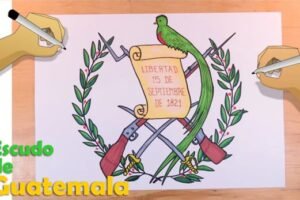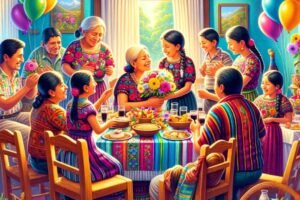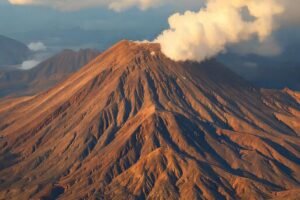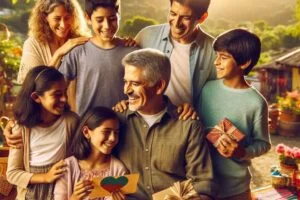The typical costumes of Guatemala and the colors of Our Land
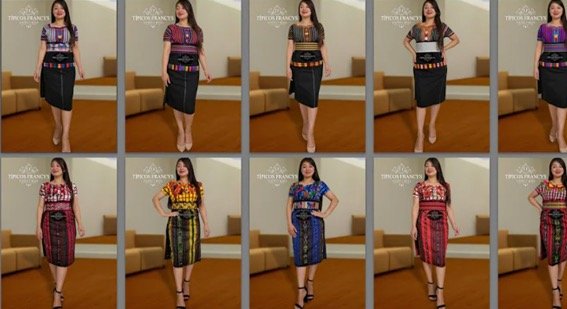
Guatemala’s traditional costumes are not just clothing; they are true expressions of the country’s soul, reflecting the rich history and cultural diversity of its native peoples. For Guatemalans living in the United States, these costumes represent a tangible link to their roots, a way to keep alive the connection with their homeland despite the distance.
Every thread and every color in these garments tell stories of generations, of traditions that stand the test of time and of a pride that transcends borders.
Description of Common Garments
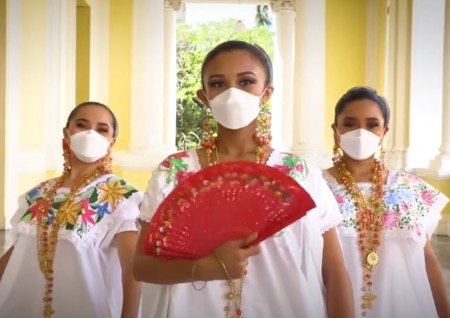
- Huipil: This traditional blouse, hand-woven on a backstrap loom, is perhaps the most emblematic piece of Guatemalan indigenous clothing.
The process of creating a huipil can take up to six months, depending on the complexity of the designs, which vary greatly from one community to another.
In Quetzaltenango, for example, huipiles are adorned with embroidery of birds and flowers, while in Huehuetenango they are characterized by vibrant geometric patterns.

- Cut: This wrap-around skirt is made by joining two panels of fabric in a seam called a rand.
Traditionally dark-colored, their length and style vary according to the region; some are worn knee-length and others, longer, fall to the ankles.
In Sololá, the cortes are known for their brocade fabric, contrasting with the simpler huipiles of the same area.

- Sash: Used to support the cut, the sash is another textile work of art, woven by hand and often decorated with intricate patterns.
Each sash can measure between two and three meters long, and in places like Baja Verapaz, they are adorned with zigzag motifs symbolizing lightning and snakes, natural elements venerated in many Mayan cultures.
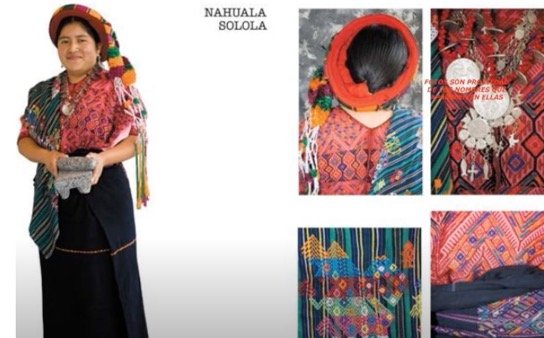
Tzute: Functional and versatile, the tzute is a garment composed of two pieces of fabric sewn together.
It is used in multiple ways: to carry babies, to cover from the sun or even as a blanket during cold nights.
In the department of Sololá, the tzutes are made from cuyuscate, a native cotton of natural brown color.
Headband: The headband is not just an adornment; in many communities, its style indicates a woman’s marital status.
The ribbons can be simple or extremely elaborate, such as those of Quiché, where they are woven with silk and decorated with large pompoms.
This list of the main pieces of typical Guatemalan costumes is just a start to get into the diversity and cultural richness that these costumes represent. Each garment is a testimony to the identity and spirit of the people of Guatemala.
Regional Diversity of Costumes
Each department of our beloved Guatemala offers a unique palette of colors, fabrics and designs that reflect its own identity.
Here we will explore how three departments in particular – Quetzaltenango, Huehuetenango and Sololá – express their essence through their traditional costumes.
Quetzaltenango is distinguished by its huipiles, which are true works of textile art. These blouses are adorned with a rich color palette and intricate embroidery that captures the beauty of nature with figures of birds and flowers, symbolizing the life and nature that surrounds the region.
The cuts of this area are equally distinctive; they are worn gathered at the waist and held in place by narrow sashes, reflecting the vibrant cultural life of Xela and its surroundings. Seeing these costumes, one not only sees a garment, but feels the pulse of the city and its traditions.
In Huehuetenango, the approach is a little more sober but impressive for its elegance. The huipiles here usually feature geometric patterns in bright colors that stand out against neutral backgrounds, a reflection of the seriousness and respect for traditions that characterize the region.
The cuts and sashes in Huehuetenango often display a bold mix of textures and colors, offering a visual contrast that demonstrates the exceptional skill of the local weavers. These garments are not only warm, but tell the stories of a people proud of their heritage.
Finally, Sololá is renowned for its striking red huipiles and blue cuts, which are complemented by sashes and tzutes in harmonious tones, creating a visually powerful and coherent ensemble.
The artistic skill in Sololá stands out especially in the use of cuyuscate, a native brown cotton that gives each garment a distinctive touch deeply rooted in the Guatemalan soil.
Each of these departments weaves its own history through its typical costumes, offering Guatemalans abroad a colorful and poignant reminder of where they come from. These garments are not just clothes; they are emblems of our identity and cultural pride.
Cultural Impact and Modernization
As Guatemala modernizes and becomes more integrated into the global context, traditional costumes face both challenges and new opportunities. Globalization has introduced new materials and techniques, allowing for innovations in traditional designs.
However, this has also led to a decline in the use of ancestral techniques and indigenous materials in some areas, threatening the authenticity of these garments.
For many Guatemalans in the United States, maintaining the tradition of wearing traditional dress is a way to preserve and celebrate their cultural identity in a foreign environment. It is common to see Guatemalans in the diaspora choosing to wear these outfits to special events, reaffirming their pride and connection to Guatemala.
These dynamics highlight the importance of community and educational efforts to foster the appreciation and conservation of traditional costumes, ensuring that future generations can understand and value this rich cultural legacy.

